Nagaland is one of the most famous states in the northeastern region of India. The scenic beauty is the major attraction of this state which pulls many tourists to it. The various places of tourist interests of Nagaland bear relics to the rich cultural heritage and traditional legacy of the place. The ideal time to visit the north eastern state of Nagaland is from October to May. Khonoma Gate of Nagaland reflects the courageous nature of the local indigenous inhabitants of Khonoma village who had built the huge gate to protect themselves from the British intruders. Endowed with natural splendor, Khonoma Gate draws several visitors from far and wide.
Tourist Places in Nagaland
Changtongya
Among the tourist attractions of Nagaland, Changtongya occupies a prominent place. The place is known for being a safe heaven for birds as there are no-hunting zone reserve forests in the region. The town is an ideal destination for bird watchers.
Huge number of migratory falcons fly from Mongolia and Germany to the forests of Changtongya. Tourist comes here to enjoy the unspoilt beauty of the nature. The best time to visit this beautiful town is from the month of October to the end of November. The nearby villages of Chuchuyimlang and Pongo are also interesting places to visit.
Changtongya town can be reached very easily as the nearest airports are at Jorhat and Dibrugarh. It is located in 40 km south of Tuli, which has well-connected roads.
Dzukou
Dzukou or the Dzukou valley in Nagaland is a picturesque state in the north eastern corner of the Indian subcontinent. The beautiful valley, lying at an elevation of 2438 meters above the main sea level, is just 30 km to the south of the state's capital, Kohima. A treasure trove of flora and fauna, Dzukou is also lovingly called the Valley of Flowers. The wondrous natural rhapsodies of the hill retreat presents a captivating locale, specially when during the monsoon. No wonder, the months of June to September is the best time to visit Dzukou Valley.
Dzukou Valley is a trekkers paradise, posing challenges with winding paths that fringe the rugged hills. Rhododendrons, Euphorbias, Aconitums and lilies run a riot of colors in the Dzukou Valley, as the summer sets in. Wild flowers dapple the valley in vibrant hues, giving a heavenly look to the mesmerizing valley. The trekking trails are some of the best in the whole of north-eastern India, appealing the wanderlust driven tourist with all its natural caves and rocks, gurgling streams and the verdant greens.
The Dzukou Valley can be accessed from Kohima or Dimapur by a bus or taxi. Dimapur houses the nearest railhead as well as the nearest airport to Dzukou Valley. Accommodation is available in the Dzukou Valley Circuit House and PWD bungalows.
Japfu Peak
The Japfu Peak is set amidst the verdant locales in the north-east Indian state of Nagaland. At an elevation of 3048 meters from the main sea level, the hill retreat is overshadowed by thick bamboo bushes that have an appearance of a lawn. A trek up the Japfu peak can be tough and trying, but the verdant and beatific landscape from the top gives a captivating sight that is certain to enrapture tourists. The peak is the second highest peak of Kohima and is just 15 km from this capital city of Nagaland. The hill top portrays a bird eye view of the entire city of Kohima.
The Japfu Peak ranks high among the Nagaland attractions and the mystical sun rise view from the peak is a cherished memory. The dry months from November to March are best for a trip to Japfu Peak. After the rain drenched monsoon, the air becomes fresh along with the clear skies and the surrounding appears all the more green in Japfu.
The Northern Montane Wet Temperate Forests predominate the landscape of Japfu with evergreen covers of Michelia, Magnolia, Quercus, Prunus, Alnus, Schima and Betula.
Rhododendrons run a riot of colors as the summer sets in the Japfu Peak of Nagaland. Incidentally, the world's tallest Rhododendron tree has been identified in Japfu peak that towers up to 130 feet and the base has a circumference of around 11 feet. The name of the tree has been enlisted in the Guinness Book of World Records for its rapid spread.
Khonoma Gate
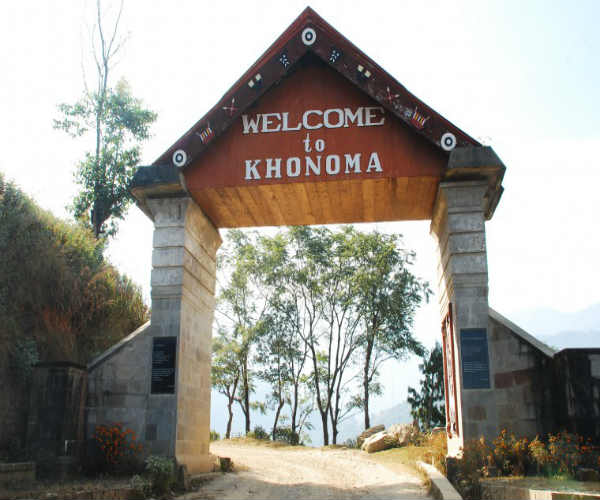
During the ancient times the local indigenous population of the village of Khonoma extended protection to the neighbouring villages from the Englishmen who regularly raided the villages. Known for their courage, the local villagers of Khonoma village often fought with the intruders to save their life and property.
Endowed with natural scenic beauty, Khonoma village draws several tourists who are enthralled and enchanted with the captivating sight of the place. The luxuriant green fields and salubrious weather relieve the tourists from the stress and strains of daily mundane life. The Khonoma Gate portrays the strong endeavor of the local citizens to save their life and property from the foreign intruders. The tiny village of Khonoma is famous for producing twenty different kinds of paddy which is the staple food of the local indigenous inhabitants of Nagaland.
Khonoma is easily accessible from Kohima by well-maintained roads of Nagaland. Most of the tourists who visit the place are awed by the old glory and grandeur which is reflected in the various places of tourist attraction of Khonoma.
Meluri
Meluri is visited by tourists throughout the year. The scenic beauty of the place is exceptional with green hills and small, meandering rivers. Shilloi Lake is a popular tourist attraction, which is very near to Meluri and can be traveled by jeep or bus.
Tuli Town
Tuli Town is one of the popular tourist attractions in Nagaland. Tuli Town is located in the Mokokchung District of Nagaland in India. It is geographically located between 26°39' North Latitude and 94°41' East, Longitude and at an elevation of 1,148 feet above sea level. The beautiful Town of Tuli is located on the right bank of river Melak. The panoramic beauty of the town with rolling hills, meandering rivers and gentle plain attracts loads of tourists. In Tuli Town, the Langpangkong range gently rises above the Melak plains adding to its natural beauty. Along the topographical lines Tuli Town is divided into three divisions:
- Tuli headquarter
- Tuli Paper Mill Township.
- Tuli Lenden (including Tzudikong)
In Nagaland, Tuli Town is among the most well-connected places, as of other state and district highways passes through it. The National Highway-61 traverses through the town, thus connecting it to some of the major places of the state
Nagaland State Museum
Nagaland State Museum is located in Kohima, the capital city of Nagaland. It is located nearly 1 1/2 km north of the city. The priceless treasures of the museum, portrays the rich cultural heritage of the the sate of Nagaland. It is one of the best places to learn about the history and traditions of the Nagas. Nagaland State Museum can be reached very easily as it is located in the capital city of Kohima, which is well-connected to some of the major cities. The nearest airport and railhead is at Dimapur.
Some of the items that are exhibited in the museum are pillars, gateposts, jewellery, statues, etc. In a separate shed of the museum a ceremonial drum quite similar to a dug-out war canoe is displayed. This vessel indicates that the Nagas may have shifted to Nagaland from Sumatra.
Nagaland State Museum offers a detailed panorama of the lifestyle of each tribe inhabiting the state. This State Museum exhibits the social hierarchy,architecture, culture, costume and custom of the Nagas. In the basement of the museum, birds and animals that are found in the North-Eastern hilly areas can be seen.
Nagaland Museums
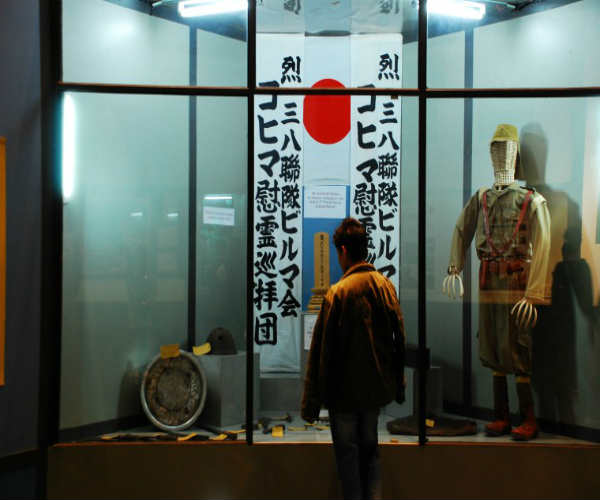
Nagaland is inhabited by 16 main tribes. Some of the tribes that live in Nagaland are the Kukis, the Kacharis, the Changs, the Angamis, the Aos,the Sumis, the Konyaks, the Chakhesangs, the Lothas, the Pochurys etc. All these tribes have their unique culture, tradition, customs,costumes etc which is exhibited in the museums of Nagaland.
Wildlife
Wildlife in Nagaland is both rich and diverse. The state of Nagaland has been abundantly gifted by nature with exceptional scenic beauty and wide variety of flora and fauna. The rich wild life of the state has added to its charm. To protect this rich wildlife the Government has taken a number of initiatives and set up wild life sanctuaries to protect these rare species of animals and birds from extinction.
There are three wildlife sanctuaries in Nagaland namely Fakim Sanctuary, Pulie Badze Sanctuary and Itanki Wildlife Sanctuary. Some animals found in the region are Tiger, Bison, Slender Loris, Himalayan Bear, Hoolock gibbons, Panther, Wild Boar, Barking Deer, Jungle Cat, Sambar, etc. Some of the rare species of birds that can be seen here are Indian Horn Bill, Tragopan Pheasant, Grey Pheasant, Jungle Fowl, Green Pigeon, Doves, etc.
Zoological Park or the Kohima Zoo
This is one of the places in Nagaland that is frequented by the tourists. This zoo is home to the state bird of Nagaland, tragopan bird. Tourists will also be able to come across wild bufallo, which is popularly called as Mithun in this zoo. Apart from these, golden langur is also often seen in this zoo. This zoo is also famous for nature trips and bird watching.
Pulie Badze Sanctuary
Pulie Badze Sanctuary is a wildlife sanctuary of Nagaland. It is spread over an area of 9.23 sq. km. If one is planning for an unforgettable wild adventure, Nagaland is an ideal destination which is rich in wildlife. The sanctuary is located in a beautiful location surrounded by green hills and streams.
The Pulie Badze Sanctuary lies in close proximity to the capital city of Kohima, thus making it easier for travellers to reach there. The Forest Department preserves the sanctuary from any kind of encroachments. The sanctuary is famous for the wide variety of birds. Tragopan Blythii and White-naped Yuhina are among the rare species of birds which can be seen here. It is a pleasurable sight to see these beautiful birds in their natural habitat.
Intanki Wildlife Sanctuary
Intanki Wildlife Sanctuary is a safe haven for a wide variety of animals and birds in the northeastern state of Nagaland. It is located at a distance of 37 km from Dimapur and 111 km from Kohima, the capital city of Nagaland. The ideal time to visit the sanctuary is from November to February. The landscape of this part is abound with hills and mountains. The surrounding of the sanctuary is extremely beautiful and it is surrounded by hills and enveloped with green plantations.
The Intanki Wildlife Sanctuary is preserved by the Forest Wildlife Department. The sanctuary is home to some rare species of animals and birds. The sanctuary is rich with varied wealth of flora and fauna. Journey to Intangki Wildlife Sanctuary is quite convenient as the closest airport and railhead is at Dimapur. From there, one can easily travel to the sanctuary from Dimapur by road.
One of the main attractions of the Intanki Wildlife Sanctuary is the Hoolock Gibbon, the only Gibbon found in India. Some important animals found in the Sanctuary are Sloth Bear, Elephant, Tiger, Mithun, Sambar, Goral, Flying Squirrel, Barking Deer, Wild Dog etc. The sanctuary is known for its large collection of rare species of birds. Some of the birds seen here are Kaleej, common pheasant, Hornbill, Black Stor etc.
Fakim Sanctuary
Fakim Sanctuary is a beautiful wildlife sanctuary in the state of Nagaland. The state is gifted by nature with numerous varieties of flora and fauna. The ideal time to visit the sanctuary is during the winter season especially between the months of November to February. The beautiful location of the sanctuary covered with hills, meandering brooks, and narrow valleys adds to the charm of the place.
The Fakim Sanctuary in Nagaland is located very close to the Myanmar border. It falls in the Pungro circle headquarters in Nagaland. The Sanctuary encompasses an area of 642 hectares of land. Fakim Wildlife Sanctuary can be reached very easily as it is well connected by rail, road and air. The nearest airport is at Kohima and the capital city is further connected to Guwahati (Assam) by the NH 39. The closest railhead from the Fakim Sanctuary is at Dimapur in Nagaland.
The Fakim Sanctuary is home to a huge number of flora and fauna. Some rare species of flora and fauna can be seen here. Some of the main attractions of the sanctuary Tiger, Slender Loris, Hoolock gibbons, Panther, Wild Boar, Himalayan Bear, Jungle Cat, Bison, Sambar, Barking Deer, etc. Some of the rare species of birds found here are Indian Horn Bill, Tragopan Pheasant, Grey Pheasant, Jungle Fowl, Green Pigeon, Doves etc are.
Other Important Things in Nagaland
Bamboo Furniture
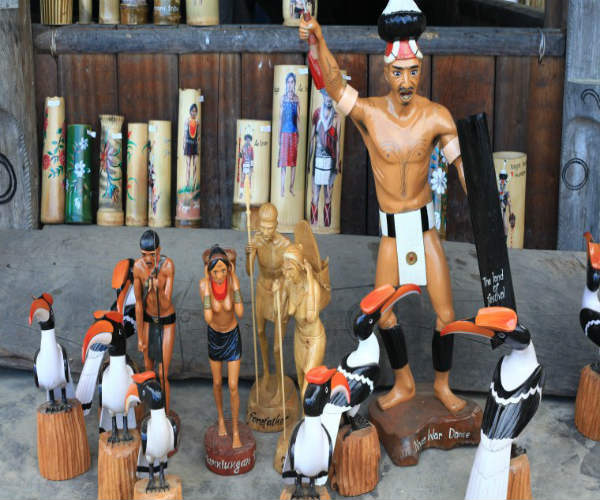
Nagaland Bamboo Furniture is gradually gaining popularity because of its increasing aesthetic appeal. Cane and bamboo products are an inseparable part of the people of Nagaland. Bamboo furniture are also popular for their durability as it is one of the strongest materials in the world.
Cane Furniture
Nagaland cane furniture is among the popular crafts of the state that can be gathered while shopping in Nagaland. The cane material is popularly used by the skilled craftsmen of the state of Nagaland. Utensils and kitchen wares crafted of cane are elaborated with multi hued motifs and designs.
The skilled tribal craftsmen of Nagaland make the craft couches and tables of cane material. Apart from the small mugs and containers made of cane, the craftsmen of Nagaland make sofas, armchairs and portable tabular shelves. With the advent of the western influence in the north eastern region of the country, the tribal craftsmen of Nagaland have incorporated western designs and improvised on the ancient furnitures to build new ones. The cane swings are also available in the markets of Nagaland.
The small cane furniture of Nagaland can be collected from the curio shops in the cities. Apart from furniture, cane is popularly used in the creation of ornaments, accessories, hat frames and helmets. The cane haversacks are popular among the foreign tourists. Along with the local markets, the cane furnitures in Nagaland have created a niche for themselves in the international market as well.
Wicker Drinking Vessels
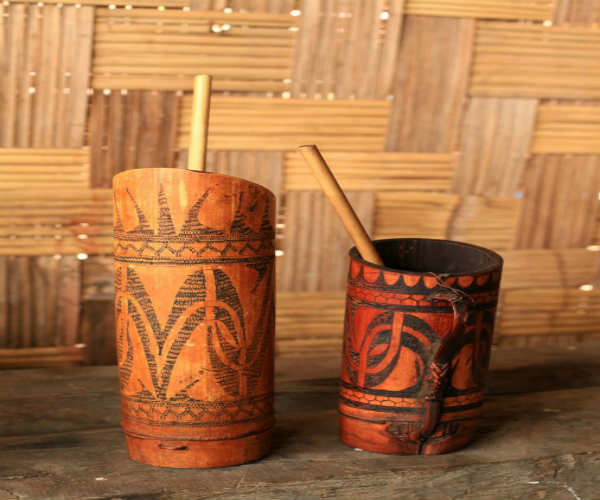
Tribal Jewellery
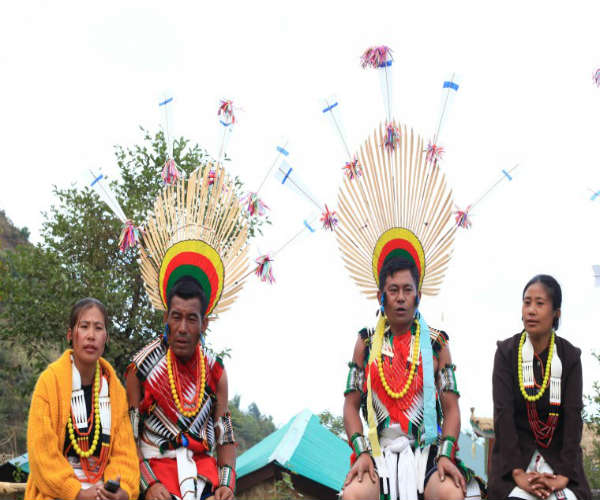
Tribal jewelry in Nagaland is prepared with the beads of different makes and natural elements. The necklaces of shell beads, stone beads and the glass trade beads are reputed in the state. The complex chain of beads are intricately woven by the skilled artisans. Some of the other accessories comprise of the the following:
- Brass Cuffs
- Brass Neck Rings
- Wrist Bangles
- Headhunter Necklaces
- Hairpieces
Handloom Weaving
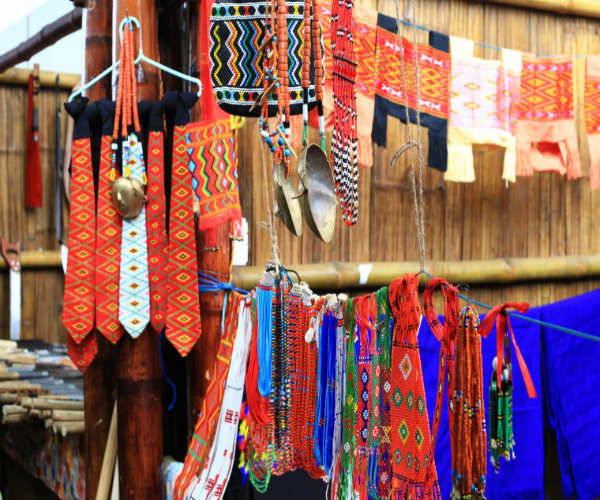
Handloom weaving in Nagaland is popularly practiced in the districts of Mokokchung, Wokha, Tuensang, Zunheboto, Mon, Phek and Kohima. The weavers produce shawls, shirts, jackets, bed-sheets, bed covers, shoulder bags, table mats and tea cozies. The motifs and designs that adorn the woven material differ according to the tribes preparing it. The designs are often named after the tribe that weaves and engineers the motif. The Rengama, Zeliang, Sema, Laltha and Angami are some of the popular colorful motifs. The colored designs and the embellishments are often symbols of the social status of the weaver. The basic colors used on the materials are blue, green, red, black and white. To decorate the handloom woven cloths, the weaver often use beads, goat hair and cowrie shells which are representatives of the wealthy weavers. In early years, the tribal people used the extracted material from the bark of trees to dye the cloth and for its synthesis. However, advancement of technology has made the process easier.
The total annual production from the handlooms of Nagaland is estimated to be 40 lakhs while the commercial production rises to 18 lakhs per annum. The Nagaland Handloom and Handicraft Development Corporation market the handloom products in the seven districts of the state and in other states of India as well. The handloom products of the corporation are produced in its centers and also bought from the local weavers of the state. The tourists may visit the emporiums established by the corporation in the seven districts while shopping in Nagaland.
Tribal Crafts
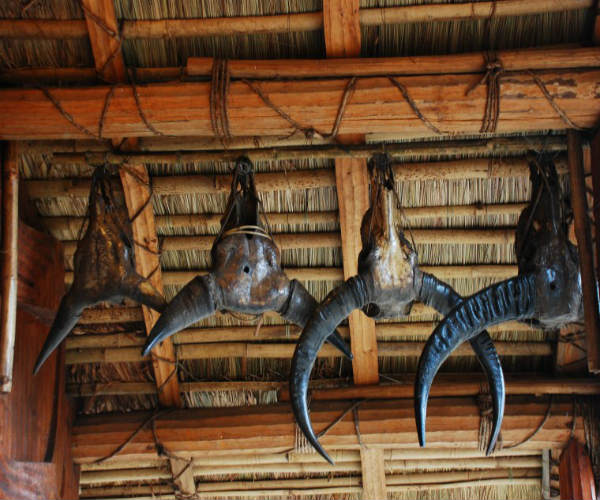
The artisans recreate articles which are substitutes for the glass and porcelain wares. The tribal art and crafts of Nagaland are representative of the rich inherited culture of the state. The skilled artisans use natural dyes and raw material from the forests of the state. Cane and bamboo are popularly utilized. Containers and baskets are crafted from cane and bamboo. Motifs and designs are added to the baskets which differ according to the tribe that weaves it. The weavers of Khonoma and Khiamngan of Tuensang District are reputed for the basket weaving. Weaving in the loin loom in popular seven districts of the state. The color pattern and the designs used by the tribes to weave in the loin loom are often power symbols used to denote the position and status of the weaver. The accessories used for ornamentation also indicate the status of the weaver. Attempts have been made to substitute the backstrap loin looms with the fly shuttle looms which are more technologically advanced.
Jewelry crafting is popular among the women folk of the state. Beads and shell are used for ornamentation. Woodcarving, pottery and metalwork are popular in other districts of the state. The rich quality and tradition of the state has been revived with the resurgence of the tribal crafts in Nagaland.
Shopping in Nagaland
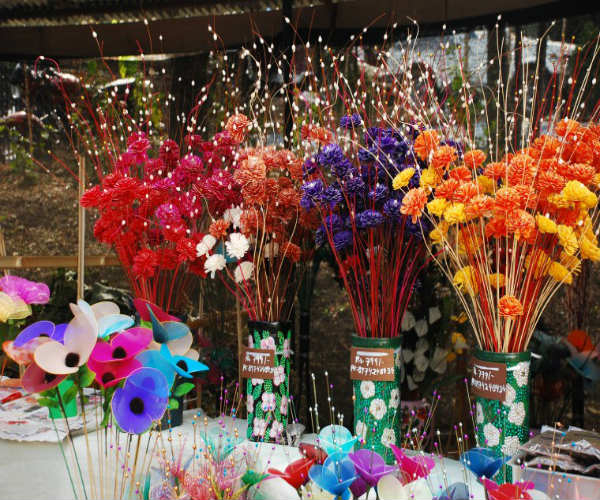
The government emporiums of the state are ideal for shopping in Nagaland as they provide genuine, good quality products, authentic artifacts at reasonable prices visit. Nagaland tribal jewelry made of metals and beads are very popular among tourists.
Places to visit in Nagaland
Travel Agents
